Jim Crow Museum
1010 Campus Drive
Big Rapids, MI 49307
[email protected]
(231) 591-5873

The Tom caricature portrays black men as faithful, happily submissive servants. The Tom caricature, like the Mammy caricature, was born in ante-bellum America in the defense of slavery. How could slavery be wrong, argued its proponents, if black servants, males (Toms) and females (Mammies), were contented and loyal? The Tom is presented as a smiling, wide-eyed, dark skinned server: fieldworker, cook, butler, porter, or waiter. Unlike the Coon, the Tom is portrayed as a dependable worker, eager to serve. Unlike the Brute, the Tom is docile and non-threatening to white people. The Tom is often old, physically weak, psychologically dependent on white people for approval. In his book, Toms, Coons, Mulattoes, Mammies, & Bucks, Donald Bogle (1994) summarizes the depiction of Toms in movies: Always as toms are chased, harassed, hounded, flogged, enslaved, and insulted, they keep the faith, n'er turn against their white massas, and remain hearty, submissive, stoic, generous, selfless, and oh-so-very kind. Thus they endear themselves to white audiences and emerge as heroes of sorts. (pp. 5-6)
Bogle's description is similar to the portrayal of the main black character in Harriet Beecher Stowe's antislavery novel Uncle Tom's Cabin. Stowe's Tom is a gentle, humble, enslaved Christian man. His faith is simple, natural, and complete. Stowe uses Tom's character to show the perfect gentleness and forgiving nature which she believed lay dormant in all black people. These qualities reveal themselves under favorable conditions. Mr. Shelby, Tom's first Master is kind; therefore, Tom's innate spirituality flourishes. Mr. Shelby is not a good businessman; his financial troubles necessitate that he sell Tom. Tom does not run away despite a warning that he is to be sold. Mr. St. Clare, his second master, befriends Tom and promises to free him. Unfortunately for Tom, Mr. St. Clare is killed before signing manumission papers. Tom's fortunes take a decidedly sad turn. Tom is sold to Simon Legree, a brutal and sadistic deep South plantation owner. Legree is also a drunkard who hates religion and religious people.
Legree intends to make Tom an overseer. Tom is ordered by Legree to flog an enslaved woman. Tom refuses. Legree strikes him repeatedly with a cowhide lash. Again, he tells Tom to beat the woman. Tom, with a soft voice, says, "the poor crittur's sick and feeble; 'twould be downright cruel, and it's what I never would do, nor begin to. Mas'r, if you mean to kill me, kill me; but, as to my raising my hand agin anyone here, I never shall, -- I'll die first" (Stowe, p. 439).
Stowe wanted to show how slavery was incongruent with Christianity. How could Christians, she wondered, buy, sell, and trade slaves? How could they offer even tacit approval of slavery? How could white Christians allow their enslaved brethren to be sold to the likes of Legree? Her book is an unabashed attack on slavery, and Tom is one of her two perfect Christian characters; Mr. St. Clare's daughter, Eva, the other. Both die, Tom as a martyr.
Legree demands information from Tom about two women runaways. He knows that Tom can help him. Tom refuses. Legree beats Tom and threatens to kill him if Tom does not help him find the women. Tom, ever the Christian, does not lie, nor does he give Legree the information. Instead, Tom says:
Mas'r if you was sick, or in trouble, or dying, and I could save ye, I'd give ye my heart's blood; and if taking every drop of blood in this poor old body would save your precious soul, I'd give'em freely, as the Lord gave His for me. O, Mas'r! don't bring this great sin on your soul! It will hurt you more than 'twill me! Do the worst you can, my troubles'll be over soon; but, if ye don't repent, yours won't never end. (p. 508)
Legree beats Tom; Sambo, one of Legree's black overseers, flogs Tom. As Tom is dying, Legree yells to Sambo, "Give it to him!" Tom opens his eyes, looks at Legree, and says, "Ye poor miserable crittur! There ain't no more that ye can do! I forgive ye, with all my soul" (p. 509). Soon afterwards, Tom dies. Stowe portrayed him as a Christ figure; albeit a childlike one. Tom was offered as a sacrifice for the sins of an evil institution.
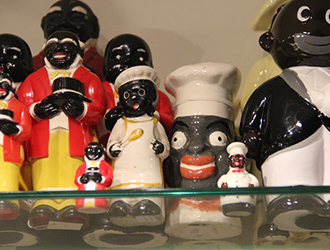
Despite being a "model slave" -- hard working, loyal, non-rebellious, and often contented -- Tom is sold, cursed, slapped, kicked, flogged, worked like a horse, then beaten to death. He never lifts a hand to hit his masters nor to stop a blow. Tom does not complain, rebel, or run away. This partially explains why the names "Uncle Tom" and "Tom" have become terms of disgust for African Americans. Tom's devotion to his master is surpassed only by his devotion to his religious faith.
Uncle Tom's Cabin sold over two million copies within two years of its publication in 1853. In the first three years after its publication, fourteen proslavery novels were written to contradict the book's antislavery messages. A more subtle undermining of Stowe's portrayal of slavery occurred on entertainment stages. By 1879 there were at least forty-nine traveling companies performing Uncle Tom's Cabin throughout the United States (Turner, 1994, p. 78). The stage versions, often called Tom Shows, differed from Stowe's book in significant ways. Little Eva was now the star; all other characters were relegated to the periphery. The violence inherent in slavery was understated. In some instances the brutality was ignored completely. The enslaved were depicted as "happy darkies" living under a benevolent, paternalistic system. Legree was mean but not a brute, and in some Tom shows he was portrayed as doing Tom a favor by killing him -- since Tom could not enter heaven unless he died.

The stage Toms represented a major, and demeaning, departure from the original Uncle Tom. Stowe's Tom was an obedient, loyal, non-complaining slave, but he was not weak or docile. Tom resisted Legree. He gave his life rather than help Legree find the two women runaways. Stowe painted a slave with dignity -- a slave who dared to pity his master. Throughout the novel, Tom is venerable and kind. His theology, though simple, is fully developed and consistent. He is a man of principle. Patricia Turner, author of Ceramic Uncles & Celluloid Mammies (1994), wrote:
Further marked inconsistencies are discernible between the values and principles of the reconstructed Uncle Tom and Stowe's original hero. Both are devout, stalwart Christians. Both are unflinching in their loyalty. But the reconstructed Uncle Toms are passive, docile, unthinking Christians. Loyal and faithful to white employers, they are duplicitous in their dealings with fellow black people. Stowe's Tom is a proactive Christian warrior. He does more than accept God's will, he endeavors to fulfill it in all of his words and deeds. He is loyal to each of his white masters, even the cruel Simon Legree. Yet his allegiance to his fellow slaves is equally strong. (p. 73)
The versions of Uncle Tom that entertained audiences on stages were drained of these noble traits. He was an unthinking religious enslaved man, sometimes happy, often fearful. Significantly, the stage Toms were middle-aged or elderly. He was shown stooped, often with a cane or stick. He was thin, almost emaciated. His eyesight was failing. These depictions of Uncle Tom are inconsistent with Stowe's Tom who was a "broad-chested, strong armed fellow." Stowe's original was the father of small children, unlike the desexed Toms of the stage. Stowe's Tom was capable of outworking most of the enslaved. Patricia Turner says of Stowe:
By depicting his ability to save a child's life and work long days in the field, she delivers a brave, physically capable hero whose abilities contradict the lazy slave stereotype then being actively promoted by pro-slavery Southerners. The elderly, stooped-over, slow-moving Uncle Tom of contemporary popular culture could never have fulfilled the political ends sought by Stowe. (p. 73)
Portrayals of Uncle Tom in movies also departed from Stowe's original. In 1903, Edwin S. Porter directed a twelve-minute version of Uncle Tom's Cabin. This was the first black character in an American film; ironically, Uncle Tom was played by an unnamed white actor colored with blackface makeup. Porter's Uncle Tom, like the Toms on stage, was a childlike, groveling servant. In the first quarter of the 20th century there were many cinematic adaptations of Uncle Tom's Cabin which portrayed slavery as a benevolent institution, Little Eva as an earthly angel, and black people, especially Tom, as loyal, childlike, unthinking, and happy. In 1914, a black actor, Sam Lucas, was allowed to play the Uncle Tom role in a film (Ritchey & Daly). His advanced age -- he was seventy-two -- helped perpetuate the perception that Uncle Tom was old and physically weak. In 1927 Universal Pictures remade Uncle Tom's Cabin (Pollard) and used the black actor James B. Lowe in the title role. The Toms played by Lucas and Lowe, like the many Toms played by white actors in blackface makeup, were genial, passive, happy servants.
Uncle Tom was not the only Tom depicted in early American movies. Indeed, the Tom character was a staple of the movie screen and, later, television shows. In the silent short film Confederate Spy (Olcott, 1910), Uncle Daniel, a Tom character, is a southern black spy. He is caught and brought before a Union firing squad. He has no regrets facing death because he "did it for massa's sake and for little massa" (Bogle, 1994, p. 6). In For Massa's Sake (Golden, 1911), a former enslaved man is so attached to his former master that he sells himself back into slavery to help pay the white man's debts (Bogle, p. 6). The Birth of a Nation (Griffith, 1915) and Hearts in Dixie (Sloane, 1929) have numerous anti-black caricatures, including Toms who adore their masters.
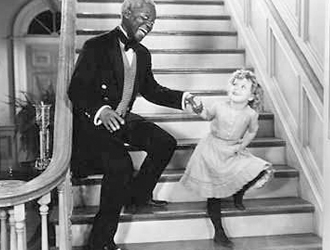
In the 1930s and 1940s black male actors were limited to two stereotypical roles: Coons such as Stepin Fetchit, Mantan Moreland, and Willie Best; and Toms, of whom the most notable were Bill "Bojangles" Robinson, Clarence Muse, and Eddie "Rochester" Anderson. Robinson is best known as child star Shirley Temple's dance partner. They appeared in four films together, including The Littlest Rebel (DeSylva & Butler, 1935). Robinson plays the role of Uncle Billy, a good-natured, well-mannered Tom. Temple plays Virginia Houston Cary, the feisty young daughter of Captain Cary of the Confederate Army. Captain Cary goes off to battle. The Cary plantation is invaded by Union soldiers. Virginia's mother becomes ill and soon dies. Captain Cary returns home and is taken prisoner. He is tried for treason. Uncle Billy helps little Virginia escape. The pair earn their fare to Washington by dancing and "passing the cap." Miraculously, they gain an audience with President Abraham Lincoln who pardons Virginia's father. Robinson also portrayed genial, loyal servants in The Little Colonel (DeSylva & Butler, 1935) with Temple and Lionel Barrymore, In Old Kentucky (Butcher & Marshall, 1935) with Will Rogers, and Just Around the Corner (Hempstead & Cummings, 1938) with Temple.
Clarence Muse was a graduate of the Dickinson School of Law in Philadelphia and he had formal theatrical training; nevertheless, his career is noted for portrayals of Coons and Toms, especially the latter. He played Tom roles in Show Boat (Laemmle & Whale, 1936), Follow Your Heart (Levine & Scotto, 1936), Zanzibar (Douglas & Schuster, 1940), Heaven Can Wait (Lubitsch, 1943), Joe Palooka in the Knockout (Chester & Le Borg, 1947), and Riding High (Capra, 1950). The Tom role, like most of the early black stereotypes, suggested that black people were one-dimensional. Muse's Toms were thoughtful and often articulate servants. Bogle calls him the "dignified, humanized tom" (1994, p. 54).
Eddie Anderson played the Tom role in Jezebel (Wyler, 1938) and You Can't Cheat an Honest Man (Cowan & Marshall, 1939), but he is best known as Jack Benny's raspy voiced manservant Rochester. The pair appeared in movies, for example, Love Thy Neighbor (Sandrich, 1940), and The Meanest Man in the World (Perlberg & Lanfield, 1943), radio programs, and a long-running television program. Their on-screen relationship was characterized by good natured struggles, with Rochester often besting his "Boss." Rochester was one of the first black characters to "show up" his white employer; nevertheless, the role still fits into the Tom stereotype, albeit with elements of shrewdness and rebellion.
The 1930s and 1940s were the heyday for cinematic Tom depictions. Virtually every film that dealt with slavery included Toms. The still popular Gone With the Wind (Selznick & Fleming, 1939) included the Tom character Pork, a pathetic man, his back stooped, his speech halted, afraid of white people, yet desiring, above all, to please them. Pork is a marginal character. In later movies Toms would be even more marginalized, many lacking names. Coons played the role of comic relief. Toms symbolized wealth. Producers who wanted to show that a family had "old money" often surrounded the family with black servants. Toms also suggested a nostalgic social order. Toms represented the supposed "good ol' days" before the civil rights and black power movements.
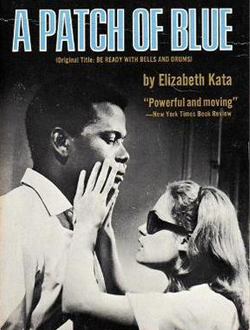
Sidney Poitier, the leading black male actor of the 1960s, also played roles that approximated the Tom stereotype, even though his characters were never one dimensional. Poitier did not play characters that were submissive, cheerful servants, but many of his characters were white-identified. In Edge of the City (Susskind & Ritt, 1957) Poitier sacrifices his life, and in The Defiant Ones (Kramer, 1958) Poitier sacrifices his freedom, for white males. Like the black servants of old, his characters worked to improve the lives of white people. In Lilies of the Field (Nelson, 1963) he helps refugee nuns build a chapel; in The Slender Thread (Alexander & Pollack, 1965) he works to help a suicidal woman; in A Patch of Blue (Berman & Green, 1965) he aids a young blind woman who does not know he is black; in To Sir With Love (Clavell, 1967) he tries to teach working class youth, almost all white, to value education. In the last, some of the students racially taunt him; eventually he loses his composure. Later, he berates himself for having displayed anger. Reluctance to fight back is reminiscent of earlier Tom portrayals, for example, Bill Robinson's character in The Little Colonel, who stands patiently and silently as he is insulted by the white master. Bogle (1994) describes Poitier's roles this way:
They were mild-mannered toms, throwbacks to the humanized Christian servants of the 1930s. When insulted or badgered, the Poitier character stood by and took it. He knew the white world meant him no real harm. He differed from the old servants only in that he was governed by a code of decency, duty, and moral intelligence. There were times in his films when he screamed out in rage at the injustices of a racist white society. But reason always dictated his actions, along with love for his fellow man. (p. 176)
Poitier's characters, like earlier Toms, were also denied sex lives. In many of his roles he has no wife or girlfriend, and, when he did have romantic relationships, they were drained of sexual tension and fulfillment. In A Raisin in the Sun (Gilbert, Rose, Susskind & Petrie, 1961) there are no romantic scenes with his black wife. In Guess Who's Coming to Dinner (Kramer, 1967) he only kisses his white fiance once, and the audience sees the kiss through a cabdriver's rear view mirror.1 In A Patch of Blue he kisses the white romantic interest once, then sacrifices any amorous possibilities by arranging for her to leave for a school for the blind.
Poitier's Toms are best described as "Enlightened Toms." In many of his films he is the smartest, most articulate character -- and, more importantly, the one who delves into the philosophical issues: egalitarianism, humanitarianism, and altruism. Moreover, he acts upon these philosophical musings. He is a paragon of saintly virtue, sacrificing for others, who, not coincidentally, are often white.
Morgan Freeman's character, Hoke, in Driving Miss Daisy (Zanuck, Zanuck & Beresford, 1989) is reminiscent of Poitier's Homer Smith in Lilies of the Field. Neither Hoke nor Homer has a life apart from white people. We know little of either character's experiences or hopes. They live to solve the problems of the white characters; and, of course, both are desexed. Although neither Hoke nor Homer Smith is a fully developed character, both are preferable to Big George in Fried Green Tomatoes (Avnet, Kemer & Avnet, 1991). Big George is a pliant, obedient, one-dimensional servant, a relic.
The list of Toms who have been used to sell products is too long to exhaust here. In the 1890s Dixon's Carburet of Iron Stove Polish used "Uncle Obadiah" in their advertisements. He is elderly, frail, with ragged clothes, but he is smiling. In the 1920s Schulze Baking Company used the image of an old banjo-strumming Tom on its advertisement selling Uncle Wabash Cupcakes. In the 1940s Listerine used a black porter in its magazine advertisements, and Mil-Kay Vitamin Drinks used a smiling black waiter on its posters and billboards. A 1950s souvenir tip tray from The Homestead in Hot Springs, Virginia, shows a smiling black waiter balancing plates on his head. In the 1940s Converted Rice changed the name of its major product to Uncle Ben's Brand Rice, and began using the image of a smiling, elderly black man on its package. Arguably the most enduring commercial Tom is "Rastus," the Cream of Wheat Cook.
Rastus was created in 1893 by Emery Mapes, one of the owners of North Dakota's Diamond Milling Company.2 He wanted a likable image to help sell packages of "breakfast porridge." Mapes, a former printer, remembered the image of a black chef among his stock of old printing blocks. He made a template of the chef and named the product Cream of Wheat. The original logo showed a black chef holding a skillet in one hand and a bowl of Cream of Wheat in the other (Siegel, 1992). This logo was used until the 1920s when Mapes, impressed by the "wholesome" looks of a Chicago waiter serving him breakfast, created a new chef. The waiter was paid five dollars to pose as the second Rastus in a chef's hat and jacket. The image of this unknown man has appeared, with only slight modifications, on Cream of Wheat boxes for almost ninety years.
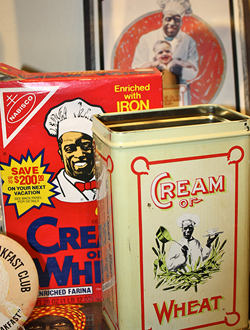
Rastus, like Aunt Jemima, is more than a company trademark -- he is arguably a cultural icon. Rastus is marketed as a symbol of wholeness and stability. The toothy, well-dressed black chef happily serves breakfast to a nation. In 1898 Cream of Wheat began advertising in national magazines. These advertisements were often reproduced as posters. Many of those advertisements are, by today's standards, racially insensitive. For example, a 1915 Cream of Wheat poster shows "Uncle Sam" looking at a picture of Rastus holding a bowl of the cereal. The caption reads "Well, You're Helping Some!" This may have been a suggestion that black people were contributing little to the war effort. A 1921 Cream of Wheat poster shows a young white boy sitting in a rickshaw that is being pulled by an elderly black man. The man has stopped to smoke. The smiling boy, waving a whip-like stick, says, "Giddap, Uncle." Often Rastus is portrayed as barely literate. In a 1921 advertisement, Rastus, smiling, his gums showing, holds a sign which reads:
Maybe Cream of Wheat aint got no vitamines. I dont know what them things is. If they's
bugs they aint none in Cream of Wheat but she's sho' good to eat and cheap. Costs 'bout 1¢ fo a great big dish.
In many African American communities "Uncle Tom" is a slur used to disparage a black person who is humiliatingly subservient or deferential to white people. Derived from Stowe's character, the modern use is a perversion of her original portrayal. The contemporary use of the slur has two variations. Version A is the black person who is a docile, loyal, religious, contented servant who accommodates himself to a lowly status. Version B is the ambitious black person who subordinates himself in order to achieve a more favorable status within the dominant society. In both instances, the person is believed to overly identify with white people, in Version A because of fear, in Version B because of opportunism. This latter use is more common today.
"Uncle Tom," unlike most anti-black slurs, is primarily used by black people against black people. Its synonyms include "oreo," "sell-out," "uncle," "race-traitor," and "white man's negro." It is an in-group term used as a social control mechanism. Garth Baker-Fletcher (1993) has said,
The "Uncle Tom" appellation is the feared curse of every African American who is compelled to work under white people, while simultaneously holding a position of authority over other African Americans. Thus "Uncle Tom" can be pulled out by black people as a superior ideological weapon to enforce patterns of racial unity against the perceived threats of a white boss. (p. 39)
Black political conservatives, especially Republicans, are often labeled "Uncle Toms" or "Toms." Supreme Court Justice Clarence Thomas; Alan Keyes, the Republican presidential candidate; Shelby Steele, the professor and author; Thomas Sowell, the economist; and Walter Williams, the neighborhood activist, have all been publicly called "Uncle Toms." They are accused of being white-identified opportunists. Their motives are impugned. The November 1996 issue of Emerge magazine had a cover with Justice Thomas dressed as a lawn jockey and these words: "Uncle Thomas, Lawn Jockey for the Far Right." Inside the magazine a grinning Justice Thomas shines Associate Justice Antonin Scalia's shoes.
Black public figures who oppose affirmative action or busing are often accused of pleasing white people only to elevate themselves -- socially, politically, and economically. They publicly say about race what conservative white people dare not say: crime and welfare are black phenomena, affirmative action is reverse discrimination, and white racism is not the cause of black problems. They wear the "Uncle Tom" label as a badge -- at least publicly. To their opponents these men represent Version B Uncle Toms.
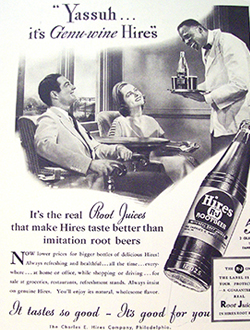
Civil rights leaders of the 1960s were called Uncle Toms by more militant black people. Whitney Young, Executive Director of the Urban League from 1961 to 1971, was a "radical integrationist." His willingness to work with white people led to charges that he was an "Uncle Tom." Reverend Martin Luther King, Jr.'s unwillingness to advocate retaliatory violence led Stokely Carmichael to accuse him of "Uncle Tomism." Bayard Rustin, one of the chief tacticians of the Civil Rights Movement, was also called an "Uncle Tom" by black militants ("Bayard Rustin Obituary", 1987). Roy Wilkins was called an "Uncle Tom" because he publicly stated that black people could achieve political power "in the system." Civil rights leaders were judged to be too passive, too religious, too eager to integrate -- too much like the stereotypical Version A "Uncle Tom." Older, more established black people have often been accused of being too conservative, too passive, and too desirous of white approval. In the 1950s Louis Armstrong was called an "Uncle Tom" by young bebop musicians.
Sports champions, especially those who publicly express conservative political views, run the risk of being labeled "Uncle Toms." After retiring from baseball, Jackie Robinson wrote a newspaper column about civil rights issues. He was vilified in the black community when he announced that he was a "Rockefeller Republican." Arthur Ashe, the tennis champion and human rights activist, was called an "Uncle Tom" for playing in the South African Open tennis tournament in 1973. His participation was seen as supporting apartheid. Muhammad Ali routinely berated his black opponents as "Uncle Toms." In 1965 Ali fought Floyd Patterson, a devout Christian and staunch integrationist. Patterson used these words to criticize Ali for becoming a Black Muslim:
Cassius Clay [Ali's former name] is disgracing himself and the Negro race. No decent person can look up to a champion whose credo is "hate whites." I have nothing but contempt for the Black Muslims and that for which they stand. The image of a Black Muslim as the world heavyweight champion disgraces the sport and the nation. Cassius Clay must be beaten and the Black Muslims' scourge removed from boxing. (Goldberg, 1997)
Ali not only called Patterson an "Uncle Tom" and "the technicolor white hope," but he predicted: "I'm gonna put him flat on his back, so that he will start acting Black; because when he was champ he didn't do as he should, he tried to force himself into an all-White neighborhood" (Goldberg). During the fight -- a one-sided bout -- Ali toyed with Patterson. Ali threw both punches and the slur, "white nigger."
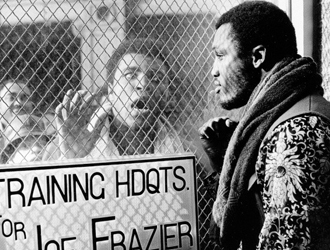
In February, 1967, Ali's opponent was Ernie Terrell. At the pre-fight press conferences Terrell repeatedly called Ali by his given name: Cassius Clay. Ali promised to beat Terrell until he addressed him properly.3 In a fight which Sports Illustrated (Maule, 1967) described as "a wonderful demonstration of boxing skill and a barbarous display of cruelty," Ali beat Terrell while shouting, "What's my name, 'Uncle Tom,' what's my name?" Before their first fight, on March 8, 1971, Ali called Joe Frazier an "Uncle Tom" and said that white people would be cheering for Frazier (Cassidy, 1999). He also used the slur against Joe Louis because of Louis' passive political stances.
In recent years the "Uncle Tom" slur has been directed against Christopher Darden, the black member of the prosecution's team in the O.J. Simpson murder trial; Detroit Mayor Dennis Archer; Karl Malone, the Utah Jazz basketball player; and Colin Powell. Cornell West, the author of Race Matters (1993) and a lifelong civil rights activist, was called an "Uncle Tom" by the African United Front (1993) because of his "support" of Jews. The "Uncle Tom" slur has even been appropriated by other ethnic groups to exert in-group pressures on their members. A Native American, for example, who is believed to be too friendly with or admiring of white people, is called an "Uncle Tomahawk"; Chinese Americans use the term "Uncle Tong." Even W.E.B. DuBois, arguably the greatest, most sustained civil rights voice of the 20th Century, was called an "Uncle Tom" -- by Marcus Garvey, who added that DuBois was "purely and simply a white man's nigger" (Williams, 1997).4
© Dr. David Pilgrim, Professor of Sociology
Ferris State University
Dec., 2000
Edited 2024
1 Nevertheless this movie broke new ground. The romantic pairing of a black man with a white woman was still controversial in the 1960s. Indeed, it was not until 1967, in Lovings v. Virginia, that the United States Supreme Court ruled laws which forbade interracial marriages to be unconstitutional.
2 The name Rastus is probably derived from Eratus, both were fairly common names for American black people at the end of the 1800s. Rastus appears in many anti-black jokes before the 1960s.
3 Ali used this tactic to motivate himself. Terrell, a fine fighter, was the underdog.
4 Williams has also been publicly called an Uncle Tom because of his political conservatism.
African United Front (1993). Open letter to Cornel West & the other Uncle Toms from the African United Front. Retrieved from http://www.blacksandjews.com/OpenLetterCornelWest.html.
Alexander, S. (Producer), & Pollack, S. (Director). (1965). The slender thread [Motion picture]. United States: Stephen Alexander Productions.
Avnet, J., & Kemer, J. (Producers), & Avnet, J. (Director). (1991). Fried green tomatoes [Motion picture]. United States: Act III Communications.
Baker-Fletcher, G. (1993). Xodus musings: Reflections on womanist tar baby theology. Theology Today, 50(1), 38-44.
Bayard Rustin: Obituary. (1987, September 28). The New Republic 197, 10.
Berman, P. S. (Producer), & Green, G. (Director). (1965). A patch of blue [Motion picture]. United States: Metro-Goldwyn-Mayer.
Bogle, D. (1994). Toms, coons, mulattoes, mammies, and bucks: An interpretive history of Blacks in American films (New 3rd ed.). New York, NY: Continuum.
Butcher, E. (Producer), & Marshall, G. (Director). (1935). In old Kentucky [Motion picture]. United States: Fox Film Corporation.
Capra, F. (Producer/Director). (1950). Riding high [Motion picture]. United States: Paramount Pictures.
Cassidy, R. (1999). The fight of the century. CBS Sportsline. Retrieved from http://www.cbssports.com/u/boxing/1999/holylew/heavy05.htm.
Chester, H. E. (Producer), & Le Borg, R. (Director). (1947). Joe Palooka in the Knockout [Motion picture]. United States: Monogram Pictures.
Clavell, J. (Producer/Director). (1967). To Sir with love [Motion picture]. United States: Columbia Pictures Corporation.
Cowan, L. (Producer), & Marshall, G. (Director). (1939). You can't cheat an honest man [Motion picture]. United States: Universal Pictures.
DeSylva, B. G. (Producer), & Butler, D. (Director). (1935). The little Colonel [Motion picture]. United States: Fox Film Corporation.
DeSylva, B. G. (Associate Producer), & Butler, D. (Director). (1935). The littlest rebel [Motion picture]. United States: Twentieth Century Fox Film Corporation.
Douglas, W. (Producer), & Schuster, H. D. (Director). (1940). Zanzibar [Motion picture]. United States: Universal Pictures.
Gilbert, R. H., Rose, P., & Susskind, D. (Producers), & Petrie, D. (Director). (1961). A raisin in the sun [Motion picture]. United States: Columbia Pictures Corporation.
Goldberg, J. (1997, June). Politics & Pugilists. Commentary Magazine.
Golden, J. A. (Director). (1911). For massa's sake [Motion picture]. United States: Pathe Freres.
Griffith, D. W. (Producer/Director) (1915). The birth of a nation [Motion picture]. United States: David W. Griffith Corp.
Hempstead, D. (Associate Producer), & Cummings, I. (Director). (1938). Just around the corner [Motion picture]. United States: Twentieth Century Fox Film Corporation.
Kemer, J., & Avnet, J. (Producers), & Avnet, J. (Director). (1991). Fried green tomatoes [Motion picture]. United States: Act III Communications.
Kramer, S. (Producer/Director). (1958). The defiant ones [Motion picture]. United States: Curtleigh Productions.
Kramer, S. (Producer/Director). (1967). Guess who's coming to dinner [Motion picture]. United States: Columbia Pictures Corporation.
Laemmle, C., Jr. (Producer), & Whale, J. (Director) (1936). Show boat [Motion picture]. United States: Universal Pictures.
Levine, N. (Producer), & Scotto, A. (Director). (1936). Follow your heart [Motion picture]. United States: Republic Pictures.
Lubitsch, E. (Producer/Director). (1943). Heaven can wait [Motion picture]. United States: Twentieth Century Fox Film Corporation.
Maule, T. (1967, February 13). Cruel Ali with all the skills. Sports Illustrated. Retrieved from http://sportsillustrated.cnn.com/vault/article/magazine/MAG1079523/index.htm.
Nelson, R. (Producer/Director). (1963). Lilies of the field [Motion picture]. United States: Rainbow Productions.
Olcott, S. (Director). (1910). Confederate spy [Motion picture]. United States: Kalem Company.
Perlberg, W. (Producer), & Lanfield, S. (Director). (1943). The meanest man in the world [Motion picture]. United States: Twentieth Century Fox Film Corporation.
Pollard, H. A. (Producer/Director). (1927). Uncle Tom's cabin [Motion picture]. United States: Universal Pictures.
Porter, E. S. (Director). (1903). Uncle Tom's cabin [Motion picture]. United States: Edison Manufacturing Company.
Ritchey, J. V. (Producer), & Daly, W. R. (Director). (1914). Uncle Tom's cabin [Motion picture]. United States: World Film.
Sandrich, M. (Producer/Director). (1940). Love thy neighbor [Motion picture]. United States: Paramount Pictures.
Selznick, D. O. (Producer), & Fleming, V. (Director). (1939). Gone with the wind [Motion picture]. United States: Selznick International Pictures.
Siegel, M. A. (1992, July 6). Classic trademarks put best faces forward. Marketing News, 26, 17.
Sloane, P. (Director). (1929). Hearts in Dixie [Motion picture]. United States: Fox Film Corporation.
Stowe, H.B. (1985). Uncle Tom's Cabin. New York: Modern Library.
Susskind, D. (Producer), & Ritt, M. (Director). (1957). Edge of the city [Motion picture]. United States: Metro-Goldwyn-Mayer.
Turner, P.A. (1994). Ceramic uncles & celluloid mammies: Black images and their influence on culture. New York, NY: Anchor Books.
Uncle Thomas, lawn jockey for the far right? (1996, November). Emerge 8(2).
West, C. (1993). Race matters. Boston, MA: Beacon Press.
Williams, W. E. (1997, June 17). Silencing Dissent. Retrieved from http://econfaculty.gmu.edu/wew/articles/97/s-dissent.html.
Wyler, W. (Producer/Director). (1938). Jezebel [Motion picture]. United States: Warner Bros. Pictures.
Zanuck, L. F., & Zanuck, R. D. (Producers), & Beresford, B. (Director). (1989). Driving Miss Daisy [Motion picture]. United States: The Zanuck Company.